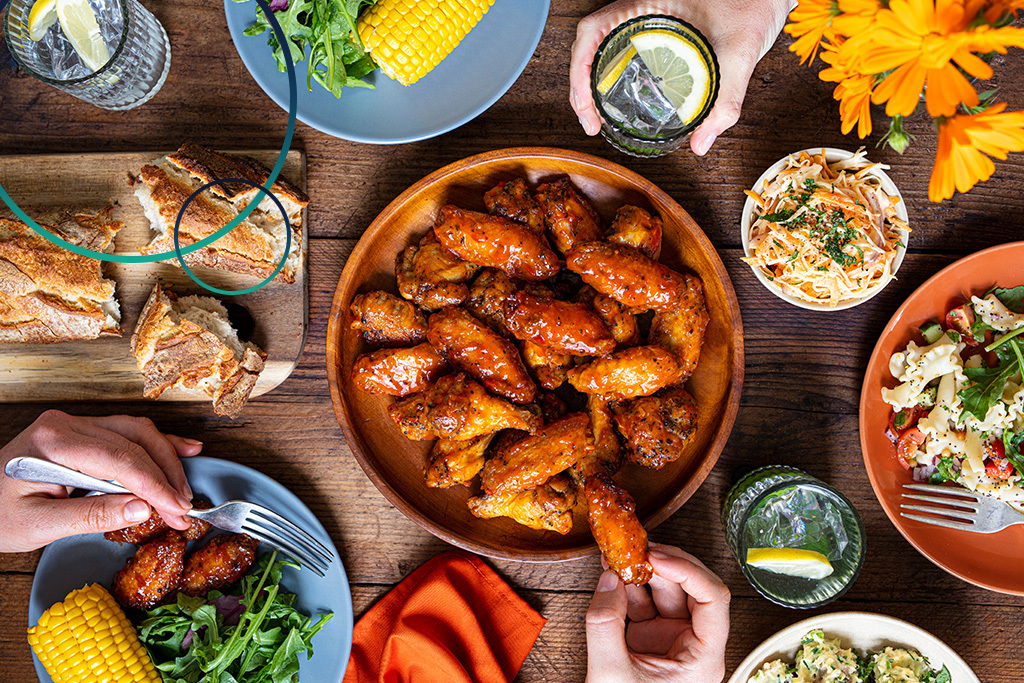Shop At Haya: Your Ultimate Shopping Guide
Discover the best shopping tips, trends, and deals for a smarter buying experience.
Snap, Savor, Share: Food Photography That'll Make You Drool
Discover mouthwatering food photography tips that will elevate your dishes and leave everyone craving more! Snap, Savor, Share your delicious creations!
5 Essential Tips for Capturing Mouthwatering Food Photos
Capturing mouthwatering food photos requires a combination of technique and creativity. One of the essential tips for achieving stunning food photography is to focus on natural lighting. Whenever possible, use natural light from windows rather than relying on harsh artificial lights. The soft, diffused light enhances the colors and textures of the food, making it look more appealing. Additionally, consider the composition of your shot; use the rule of thirds to position your subject in a way that engages viewers and draws their attention to the dish.
Another crucial tip is to pay attention to the background and props in your photos. Ensure that the background complements the food without overpowering it. Using simple and neutral-colored plates, utensils, or table linens can help your dish stand out. Additionally, experiment with different angles—shooting from above or at a 45-degree angle can provide unique perspectives that showcase the dish's best features. Lastly, don't forget to style your food; garnishes and thoughtful plating can elevate your photos from ordinary to extraordinary.

The Art of Food Styling: How to Make Your Dishes Instagram-Ready
The art of food styling plays a crucial role in captivating an audience on platforms like Instagram. To create visually stunning dishes, consider the color palette of your ingredients. Vibrant colors not only enhance the overall look but also make the food more appetizing. Additionally, pay attention to plating techniques. Using various heights and layers can add depth to your presentation. For instance, try using bowls or plates with different shapes and sizes to create an interesting layout. Don't forget about garnishes; a sprig of fresh herbs or a sprinkle of microgreens can elevate your dish from simple to exquisite.
Lighting is another key element in food styling. Natural light is your best friend; it brings out the true colors of your food and adds a warm glow that artificial lighting often lacks. When photographing your dishes, consider the angle and composition. A top-down view works well for flat lays, while a 45-degree angle captures the dish in a more dynamic way. Lastly, don't shy away from experimenting with backgrounds and props. Using rustic wooden boards or colorful textiles can help to enhance the overall aesthetic of your food photography. Remember, the goal is to make your dishes Instagram-ready by transforming them into visual masterpieces that not only taste great but also draw followers in!
Why Lighting is the Key to Stunning Food Photography
When it comes to capturing stunning food photography, lighting plays a crucial role that can't be overlooked. Natural light is often considered the best option; it creates a soft and inviting atmosphere that enhances the colors and textures of your dishes. Positioning your food near a window during the golden hour can produce beautiful, warm tones that make your images pop. On the other hand, if you're shooting indoors, using diffused artificial lights can help mimic that soft glow while eliminating harsh shadows. Remember, the way lighting interacts with your subject can drastically alter the mood of your photograph.
Additionally, understanding how to manipulate lighting can elevate your food photography from ordinary to extraordinary. Experimenting with various light sources, such as backlighting and side lighting, can bring out different aspects of the food. For instance, backlighting can highlight the translucency of fruits or the gloss of sauces, while side lighting can create depth and dimension, emphasizing textures. Don't shy away from shadows; they can add an artistic flair when used effectively. Ultimately, mastering the use of lighting enables you to tell a compelling visual story, making your food look irresistible to your audience.